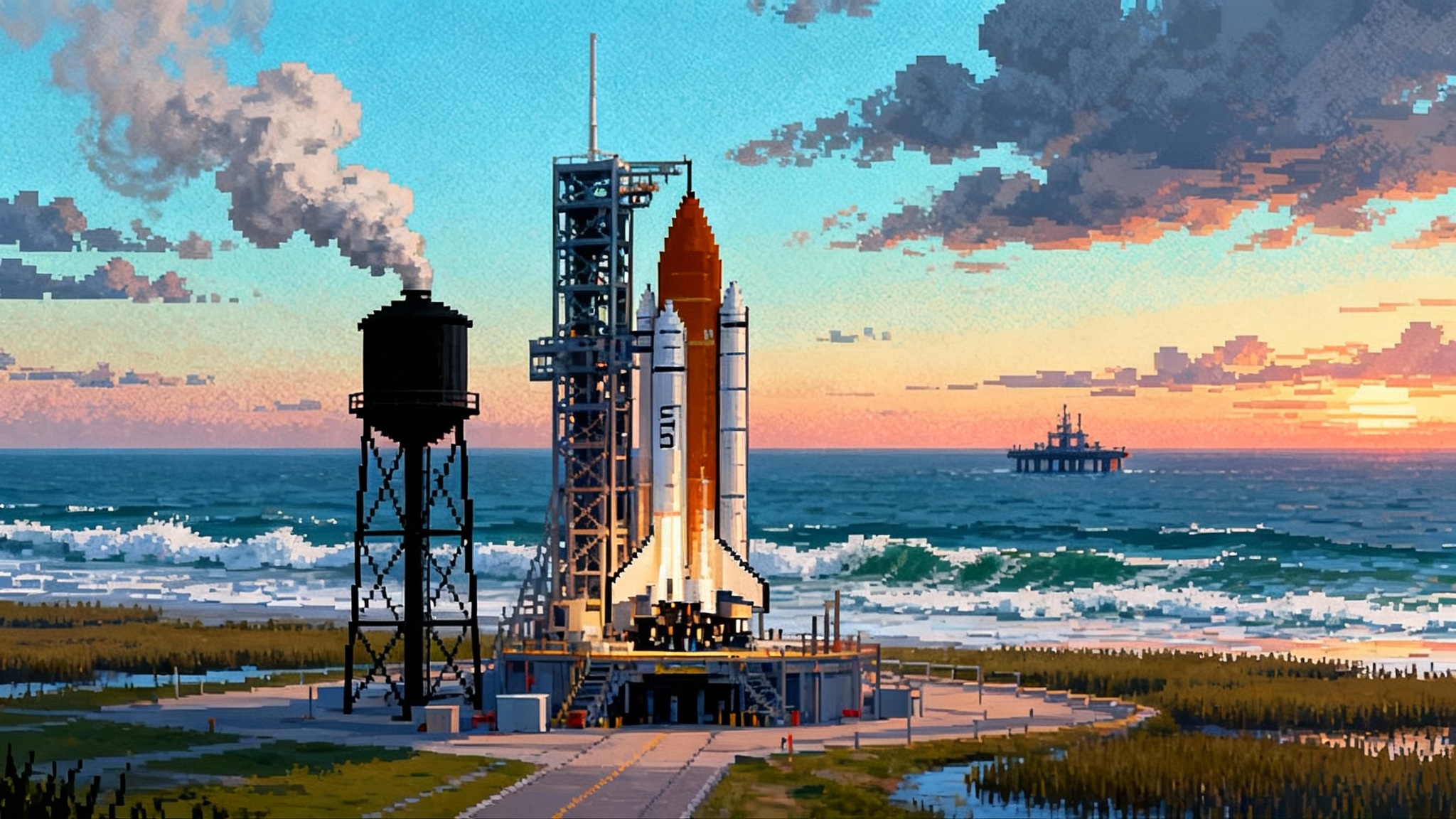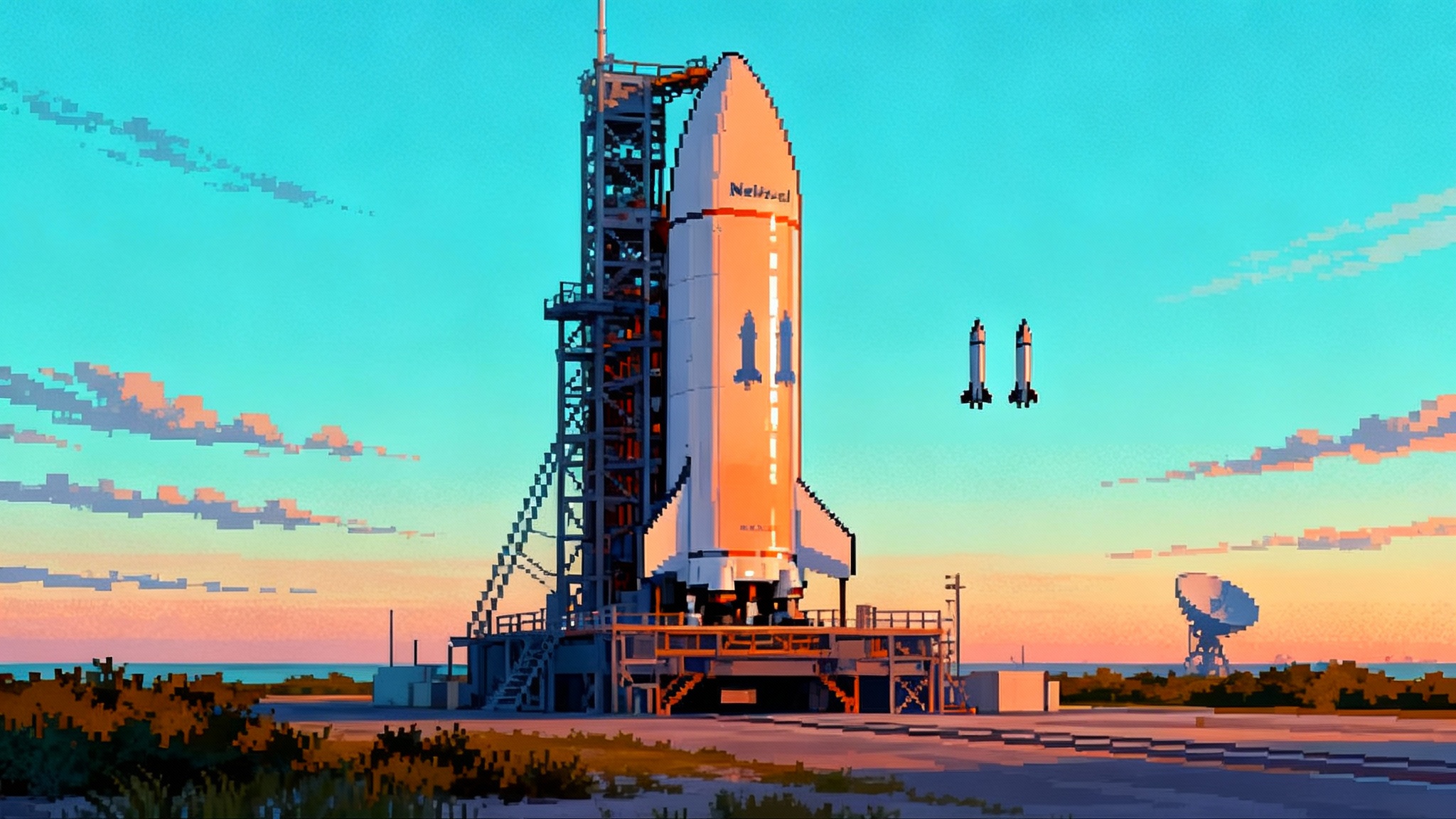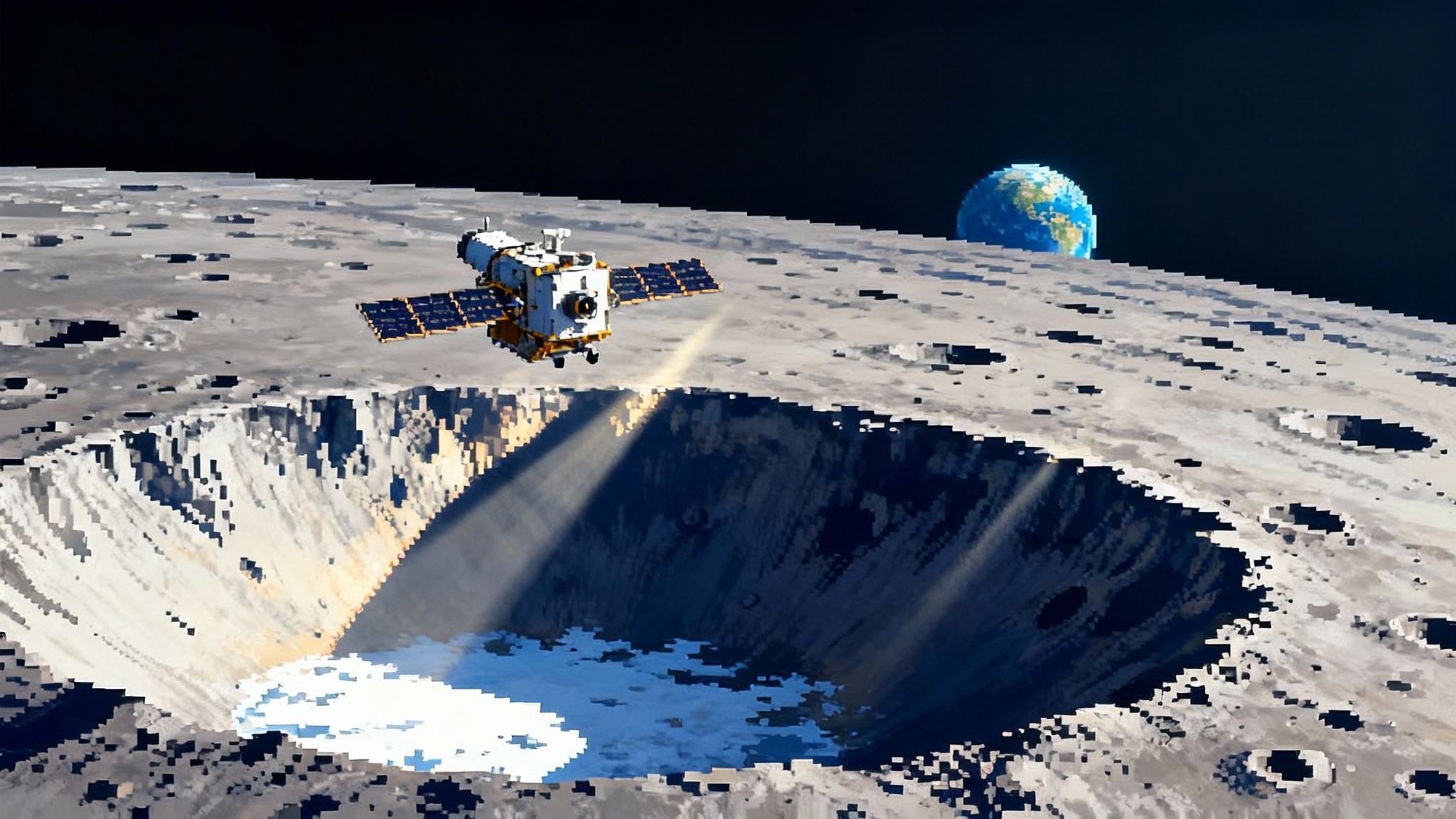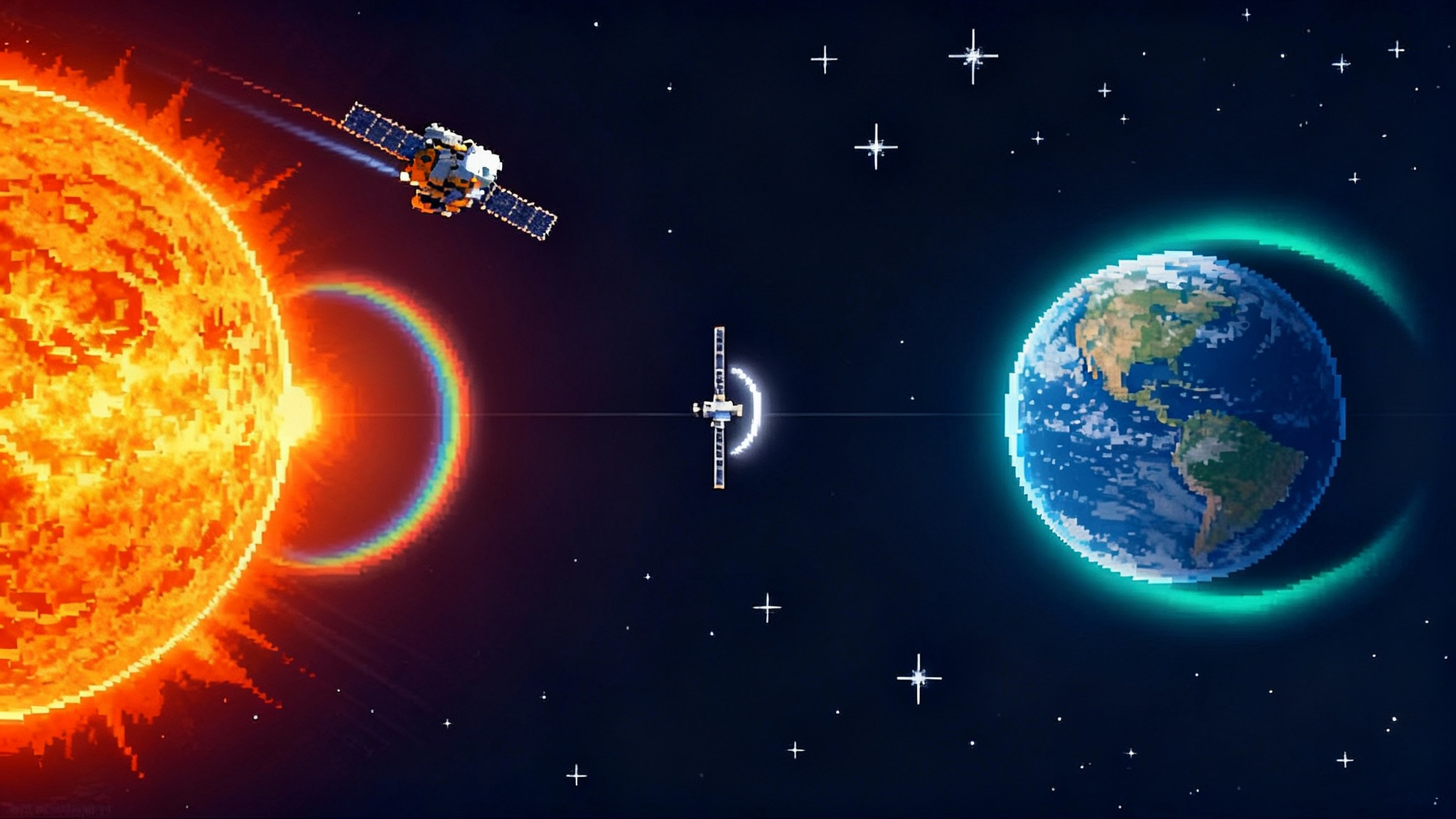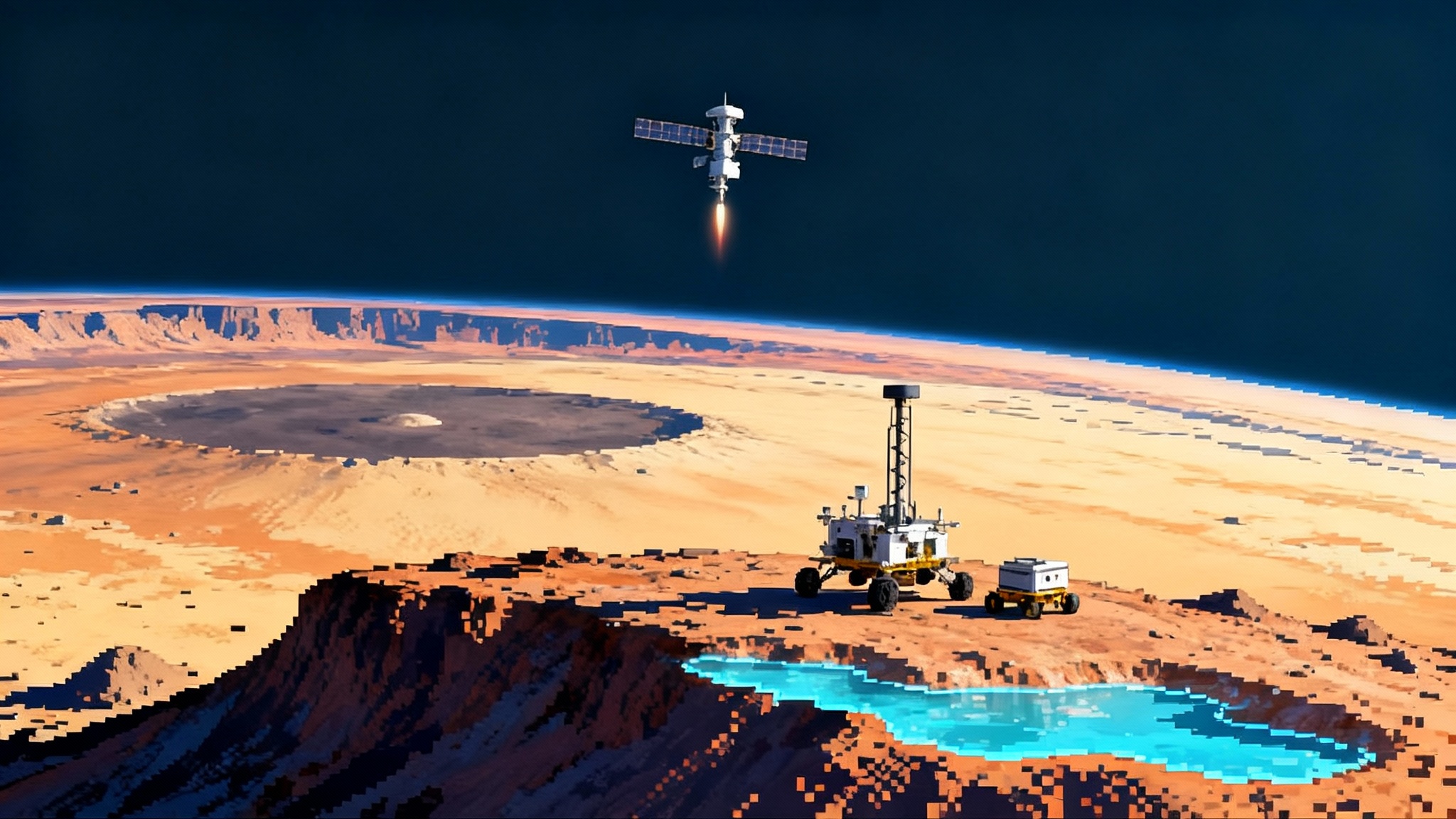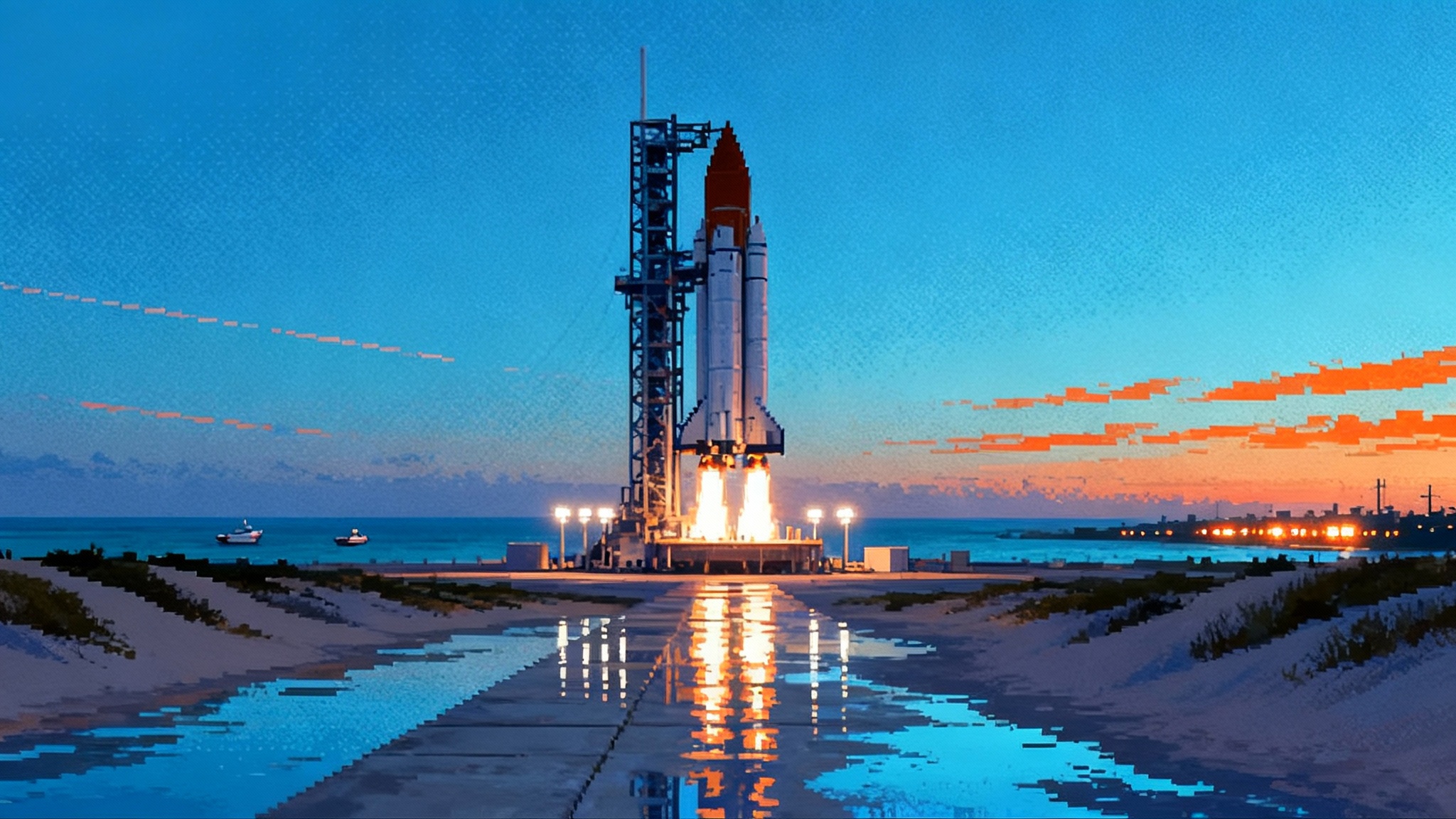Chang’e‑6 rewrites the Moon: cooler, drier, stranger
New analyses of Chang'e-6 lunar samples reveal an ultra-dry farside mantle, cooler interior temperatures, and longer-lived volcanism, reshaping formation models and near-term choices for Artemis, CLPS, and Blue Moon.
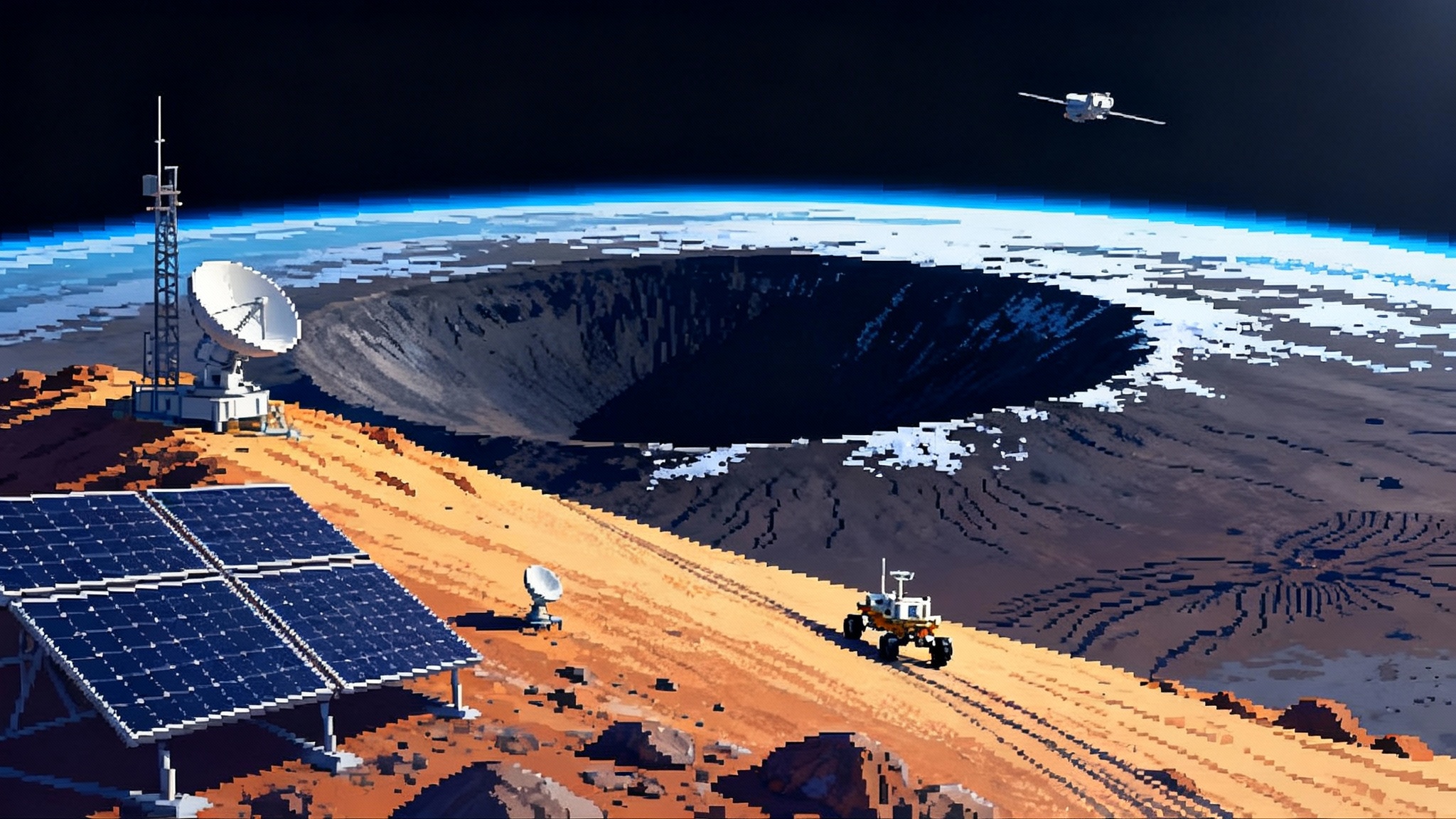
Breaking results from a hidden hemisphere
By late summer 2025, the first wave of papers on China’s Chang'e-6 samples had landed, and together they pointed to a Moon that is cooler, drier, and geologically stranger on its far side than anticipated. Analyses of basalts scooped from the South Pole–Aitken basin’s Apollo region indicate crystallization temperatures around 1,100 degrees Celsius, roughly 100 degrees cooler than comparable near-side samples. That temperature gap reflects a deep thermal asymmetry in the lunar mantle, likely tied to fewer heat-producing elements such as uranium, thorium, and potassium on the far side. This is not armchair theorizing; it is grounded in returned rocks and soils, with peer-reviewed reports and high-quality coverage indicating that the farside mantle is cooler.
Equally striking is the water story. Measurements place the far-side mantle’s water content at roughly 1 to 1.5 micrograms per gram, the lowest values yet recorded. In plain terms, each metric ton of mantle source material would carry mere grams of water. This contrasts with near-side estimates that climb to hundreds of micrograms per gram in some mantle reservoirs. The far-side mantle looks ultra-depleted in volatiles.
Then there is timing. The Chang'e-6 fragments record at least two farside volcanic episodes, around 4.2 billion and 2.8 billion years ago, extending volcanic activity on that hemisphere for well over a billion years. A separate team reading the magnetic memory in these basalts reports a resurgence of the lunar magnetic field near 2.8 billion years ago, at intensities of several to tens of microteslas. Put together, the results paint a far side that cooled differently, stayed active for longer than many models predicted, and carried a magnetic dynamo that did not fade as smoothly as once thought.
What the chemistry and physics are really saying
Think of the Moon as two kitchens that started with similar recipes but different ovens. On the near side, the oven ran a little hotter for longer because its cupboard had more heat-making ingredients. On the far side, the oven cooled sooner because it started with fewer of those ingredients. As magmas formed and rose, incompatible elements that do not fit easily into common minerals, including water and thorium, stayed in the melt. If the starting mix already had fewer of them, the erupted basalts would record that scarcity. The Chang'e-6 basalts do.
The 1,100-degree crystallization temperature matters because temperature and composition work together to control how easily rocks melt, how magmas rise, and where they erupt. Cooler mantle and a paucity of heat-producers imply thinning and focusing of volcanism into places where big impacts or mantle dynamics locally lowered the barrier to melting. The South Pole–Aitken basin, a colossal impact scar, plausibly helped by excavating crust, concentrating stresses, and altering heat flow.
The magnetic story adds another piece. Basalts that lock in field strengths of five to twenty microteslas at 2.8 billion years ago imply the lunar dynamo revived, perhaps episodically. That is consistent with a Moon that still had internal stirring, whether from precession-driven flows, a crystallizing core, or a basal magma reservoir. The far side did not simply go cold and quiet after 3.5 billion years; it flickered.
A revised formation and evolution model
Older narratives tried to explain the near-to-far side dichotomy with a single dominant cause: a long-lived concentration of heat-producers on the near side, a thicker far-side crust that smothered volcanism, or even an ancient collision that splashed material onto one hemisphere. The Chang'e-6 results push toward a layered explanation.
- Start with a global magma ocean that cooled unevenly. Bulk asymmetries in heat-producing elements emerge as the ocean solidifies, seeding a hotter near-side mantle.
- Add the South Pole–Aitken impact, which removes crust, perturbs mantle flow, and redistributes material. The impact concentrates melting potential in its wake while also excavating deep rocks.
- Over the next billion years plus, volcanism persists where conditions remain favorable. On the far side, that persistence is real but patchier and cooler.
- Meanwhile, the dynamo sputters. Field intensity rebounds around 2.8 billion years ago, telling us mantle and core processes remain coupled enough to drive a global magnetic field.
In this picture, the far side’s ultra-dry mantle is not a quirky footnote. It is a boundary condition that set the thermostat for farside volcanism, the ingredients for its magmas, and the timescales for interior cooling.
What this means for the hunt for lunar water
These mantle measurements do not drain the Moon of water. They redefine where the useful water is and how to get it. For broader resource context, see how Oasis-1 will map lunar fuel and metals.
- Permanently shadowed regions near the poles remain the prime reservoirs for ice. Their temperatures are cold enough to trap migrating water molecules for geologic timescales. Far-side mantle dryness does not change that.
- Solar wind implantation still manufactures hydroxyl and water in the top millimeters to centimeters of regolith across both hemispheres. Fine-grained soils and glassy particles act as sponges. Several studies around the Chang'e-6 site suggest diurnal cycles and local time matter, which is practical guidance for prospecting.
- Pyroclastic glass beads that can hold extractable water are abundant in many near-side deposits. Farside equivalents may be less water-rich if their source magmas started drier. This argues for prioritizing known volatile-rich pyroclastic sites on the near side for water harvesting demonstrations, while using the poles for ice.
Bottom line: in the next phase, aim water prospecting at polar cold traps and at specific near-side pyroclastic provinces. Treat farside mantle-fed basalts as lower-probability water sources but high-value science targets.
Choosing sites for Artemis, CLPS, and Blue Moon
Site selection is a balancing act among illumination, traversability, communications, science value, and now verified thermal and volatile context.
- Artemis landings: NASA’s short list includes places like Malapert Massif, Mons Mouton, Nobile Rim, and the Leibnitz Beta Plateau. Peaks of near-permanent light help power and thermal management. The new Chang'e-6 evidence reinforces a focus on polar terrain where cold traps cluster and communications geometry is manageable.
- CLPS deliveries: Far-side missions such as the Farside Seismic Suite to Schrödinger Basin demand relay links and robust thermal designs. Given a cooler farside mantle, seismology, heat-flow, and magnetometry there will now probe a uniquely end-member interior. Near-term CLPS flights to the south polar region should place instruments along illumination gradients into shadow to map how volatiles cycle with sunlight.
- Blue Moon targeting: Blue Origin’s landers are being built for the south pole, with one eye on crewed sorties and another on cargo. The farside thermal context nudges Blue Moon site triage toward places with both volatile access and strong line of sight to relay assets, plus local rock types that can feed oxygen extraction at scale.
A practical tactic is to treat the south pole like a campus. Identify a ridge or mesa with near-continuous sunlight as a power and communications hub, then plan sorties down illumination ramps toward shadowed floors for sample return and volatile reconnaissance. Use near-side pyroclastic sites for pilot water release experiments, since the feedstock has already proved rich in implanted hydrogen. For launch cadence considerations that affect logistics windows, see how Neutron’s Virginia Pad opens a third reusable contender.
Communications is now the mission enabler
Farside and polar work become routine only if communications and navigation are routine. Europe’s Moonlight initiative is the first large-scale attempt to do exactly that: field a lunar constellation to provide services as a product. ESA’s plans set Lunar Pathfinder as a stepping stone in 2026, with initial Moonlight coverage by 2028 and a south-pole focus. See ESA’s Moonlight program details for the architecture and rollout. For operations resilient to solar conditions, our look at the solar radar era begins outlines why space-weather awareness will matter at the poles.
NASA is converging on the same goal through LunaNet standards and demonstrations. A Jet Propulsion Laboratory user terminal slated to ride Firefly’s Blue Ghost to the far side will commission Lunar Pathfinder links on the surface, while LuSEE-Night will use that orbiting relay to send low-frequency radio data through the long lunar night. For Artemis operations near the pole, shared standards mean Blue Moon, Starship HLS, CLPS landers, and rovers can buy communications and navigation as a service instead of hauling bespoke radios and high-gain antennas.
Logistics and international cadence
Chang'e-7 and Chang'e-8 will concentrate assets at the south pole later this decade, with a hopper designed to dip into shadowed craters and in-situ resource utilization packages to test the making of oxygen and building materials. On the U.S. side, CLPS assignments continue to fill the calendar with south-pole science and technology. Japan’s HTV-X spacecraft begins service as the successor to Kounotori and is being matured toward Gateway logistics later in the decade, which is essential if polar sorties are to scale to sustained presence. Europe’s Argonaut cargo lander and Moonlight network round out a multi-partner scaffolding that can support both robotic and human activity.
If you sense a theme, it is this: communications and logistics are the limiting reagents for farside and polar work, and 2026 to 2029 is when they become purchasable infrastructure.
Why farside science will accelerate
The Chang'e-6 sample physics gives farside science a sharper point. Seismology there will constrain a cooler mantle. Heat-flow probes will measure how that thermal regime maps into the crust. Paleomagnetic instruments can revisit the 2.8-billion-year rebound with context. Low-frequency radio astronomy will exploit the radio-quiet farside, while geologists can test competing models for farside volcanism by cross-referencing ages, compositions, and local heat-flow.
Moreover, relay coverage from Lunar Pathfinder and early Moonlight service means farside payloads do not need custom network solutions. That unlocks new mission profiles: longer-lived stations, distributed arrays of simple sensors, and rovers that can phone home reliably.
Concrete implications for the next 24 to 36 months
Here is what agencies and companies should do differently, and how.
-
Volatile prospecting
- What to do: Prioritize campaigns that stratify polar cold traps by temperature and illumination history, then rank near-side pyroclastic provinces by glass content and hydrogen abundance.
- Why: Farside mantle dryness points to surface and exogenic reservoirs as the near-term water sources. Cold traps and implanted-hydrogen glasses are the accessible bins.
- How: Fly compact neutron spectrometers and mid-infrared spectrometers on CLPS and Chang'e-7 sorties along ridge-to-shadow transects. Add drill string gas sniffers to distinguish adsorbed, ice, and bound water.
-
Power and thermal engineering
- What to do: Design for colder regolith and longer night survival on farside campaigns, even at similar latitudes to near-side sites.
- Why: Cooler mantle and lower radiogenic heating suggest subtly different ground thermal properties and heat-flow backgrounds that affect survival margins.
- How: Increase radiator area and battery margins; pre-qualify radioisotope heaters where policy allows; test passive thermal mass blocks in the field on a CLPS scout.
-
Communications and navigation
- What to do: Adopt LunaNet-compatible terminals and plan operations that assume relay service is available by late 2026 to 2028 in polar and farside orbits.
- Why: Service models cut mass and complexity and allow multi-asset cooperation.
- How: Procure user terminals that can talk to Lunar Pathfinder and early Moonlight; rehearse handovers during Earth-Moon geometry changes; standardize S-band surface-to-orbiter protocols across rovers and landers.
-
Site selection for Artemis and Blue Moon
- What to do: Choose hubs on sunlit ridges with clean line of sight to relays, then plan sorties toward shadow. Add farside targets only when relay coverage and logistics are robust.
- Why: This balances power, comms, and science at the pole. Farside volcanic plains are better treated as science field sites than water depots.
- How: Merge Chang'e-6 compositional maps, Lunar Reconnaissance Orbiter illumination models, and relay visibility windows into a single decision layer. Weight sites that offer both cold-trap access and mare-highland boundaries for diverse samples.
-
ISRU road-mapping
- What to do: Split the pipeline into two demonstrators: ice acquisition in polar shadow and oxygen extraction from regolith oxides on sunlit ground.
- Why: Water for life support and propellant is likely at the poles; bulk oxygen for industry can come from ubiquitous ilmenite and anorthosite. Farside mantle dryness makes deep water extraction a poor near-term bet.
- How: Fly an ice-auger and ovens with water capture to a small shadowed depression; separately test molten regolith electrolysis or carbothermal reduction on a sunlit ridge with ample power.
-
International logistics
- What to do: Align delivery cadences. Use early HTV-X achievements and Moonlight milestones as gates for when to move from sorties to semi-permanent assets at the pole.
- Why: Power, comms, and cargo must mature together for a base to make sense.
- How: Tie deployment of a polar power beacon and a small data relay to the first post-Moonlight pathfinder window; pre-position common spares in lunar orbit via cargo flights that also validate rendezvous and docking near Gateway.
A note on risk and opportunity
The new farside picture is not a warning sign to turn away from the pole or the far side. It is the opposite. It removes guesswork from mission design. The Moon still offers water in reachable places, but the map is sharper: harvest ice in cold traps, treat implanted-hydrogen glasses as bonus fuel, and do not count on deep magmatic water. The farside remains the ultimate science classroom, a colder lab where seismology, heat-flow, magnetism, and low-frequency radio can do work that near-side sites cannot.
The payoff
If agencies and companies act on these findings, the next three years can shift the Moon from bespoke expeditions to an integrated field program. Communications and navigation arrive as a service, logistics shifts from bespoke to routine, and site selection bakes in the new thermal and volatile evidence. That is how you turn a cooler, drier, stranger hemisphere into an advantage: you use its differences as a lever to learn faster, live smarter, and build the infrastructure that makes the rest of the Solar System reachable.
